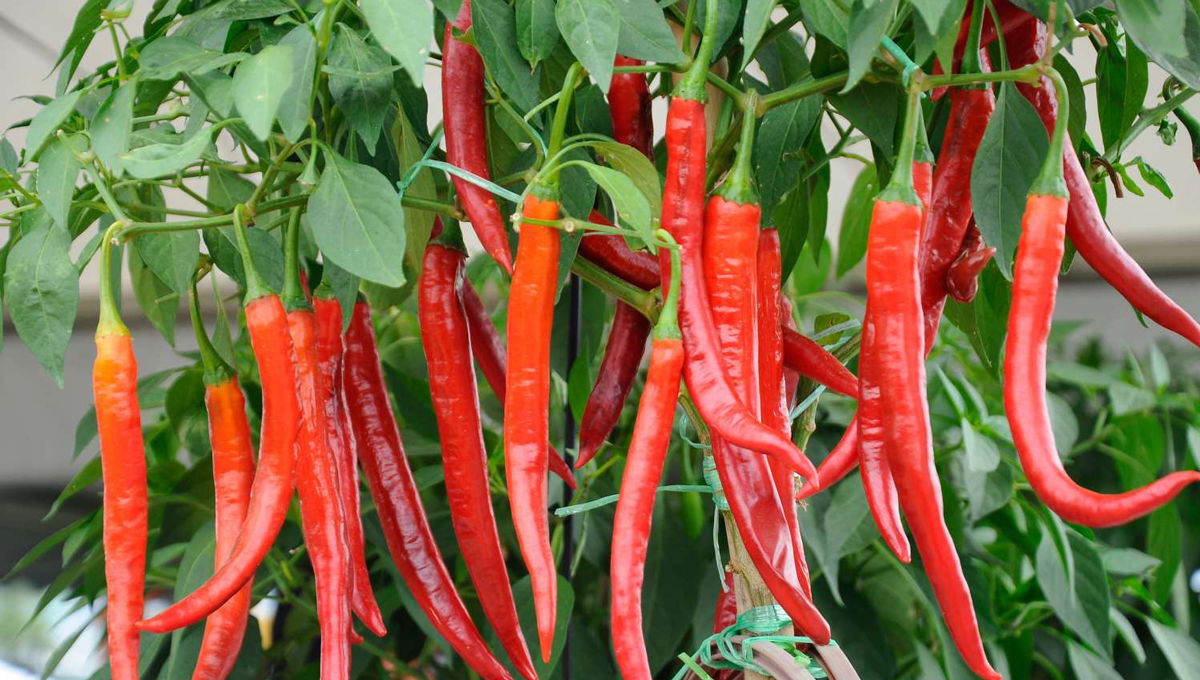Get to Know Fusarium Wilt Disease in Chili Plants and How to Control It

sumber : saprotan-utama.com
(Istimewa)Indonesia’s household staple spices and everyone’s favorite sambal come from one main ingredient, chili. Adding heat to your everyday meal, chili demand in Indonesia is neverending. The chili plant is one of the easier grown plants that doesn’t need much tools or fuss. It can even be grown in a pot in your garden for your very own source of chili. But it doesn’t mean that the plant is immune to the natural threat of diseases. Chili plants, like most plants, are susceptible to disease and pests. One of the common ones is the fusarium wilt disease.
What is fusarium wilt disease?
According to the Indonesia Ministry of Agriculture Cyber Extension, fusarium wilt disease is caused by the Fusarium oxysporum fungus. The fungus can come from the soil and could stay in the soil for a long time. It is why checking the soil condition before planting anything is important to ensure that there are no pathogens of fungus or viruses.
The infection started from the stems near the soil and roots. If infected, the xylem vascular tissue of the roots and lower stems will show a dark streak. This is a sign that the plant is infected. More visible symptoms of this disease on mature chili plants can be seen from the wilting leaves on the lower part of the plant. While the symptoms on young chili plants can be seen from the wilting leaves on the upper part of the plant. After a few days, the wilting will spread to the other leaves and the color of the leaves turns yellow even wither.
The general effect of this disease is stunted growth of the plant that causes the plant to be unable to produce. Left untreated, the disease can also cause the plant to die. This can cause a major loss of harvest for chili farmers with multiple chili plants, for the disease can spread out from one plant to the other.
How to control fusarium wilt
Let’s not let the threat of the disease deter you from planting your very own chili plant. While it may be challenging, fusarium wilt disease can be controlled in a few different ways. Some of them are:
- Uprooting symptomatic plants
Removing the infected plant is necessary to prevent spreading out the disease to other healthy plants. The fungal that causes the fusarium wilt can stay in the soil for a long time, it is recommended if possible while uprooting the infected plant to also remove the infected soils. This ensures that the fungus does not stay and cultivate. More importantly, it does not infect the healthy plant. When disposing of the infected plant and soil, it needs to be done far away to prevent further spread. Fungicide can be applied to make sure that the fusarium fungus is terminated.
- Crop rotation
Applying crop rotation methods, especially when planting in a large amount, can help to manage the population and development of the fungus. Keep in mind to do the rotation with plants that are resistant to fusarium wilt. Other plants that are susceptible to fusarium wilt are tomato, eggplant, banana, orange, cucumber, and many more.
- Adding proper water drainage
It is well known that fungus thrives in moist conditions. Avoid overwatering and add a drainage system for rainwater to avoid puddles of water around the chili plant. These puddles of water can cause the fusarium wilt fungus to thrive and infect plants.
Proper fertilization for chili plants
Fertilizer is used to help plants get their nutrition to grow and produce. But using proper ones can help to manage the spread of fusarium wilt in chili plants. It is best to avoid fertilizer with high amounts of nitrogen (N) such as the urea fertilizer. This fertilizer can make the chili plant more susceptible to the fusarium wilt disease. If needed, the NPK fertilizer with a low amount of nitrogen can be used.
Organic fertilizer can also be used to fertilize chili plants. Just make sure that the content of the fertilizer has decomposed well. A decomposing fertilizer can help further cultivate the fungus that causes fusarium wilt in the soil. Another addition to prevent and control the threat of fusarium wilt is by adding an organic fertilizer with Trichoderma. Trichoderma is a fungus that acts as a pathogen or natural fungicide in the soil. It is proven to be effective and efficient to prevent fusarium wilt in chili plants by adding it in a fertilizer form or liquid form that is added to each hole when planting.
